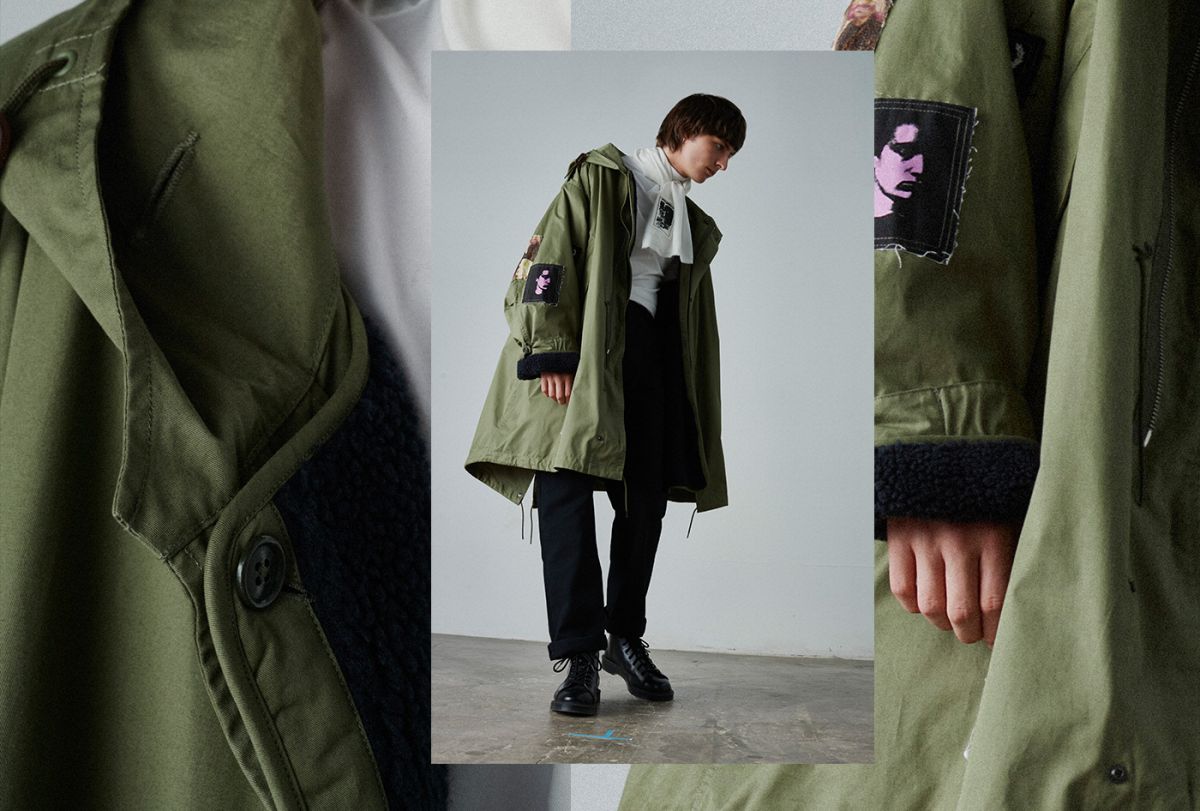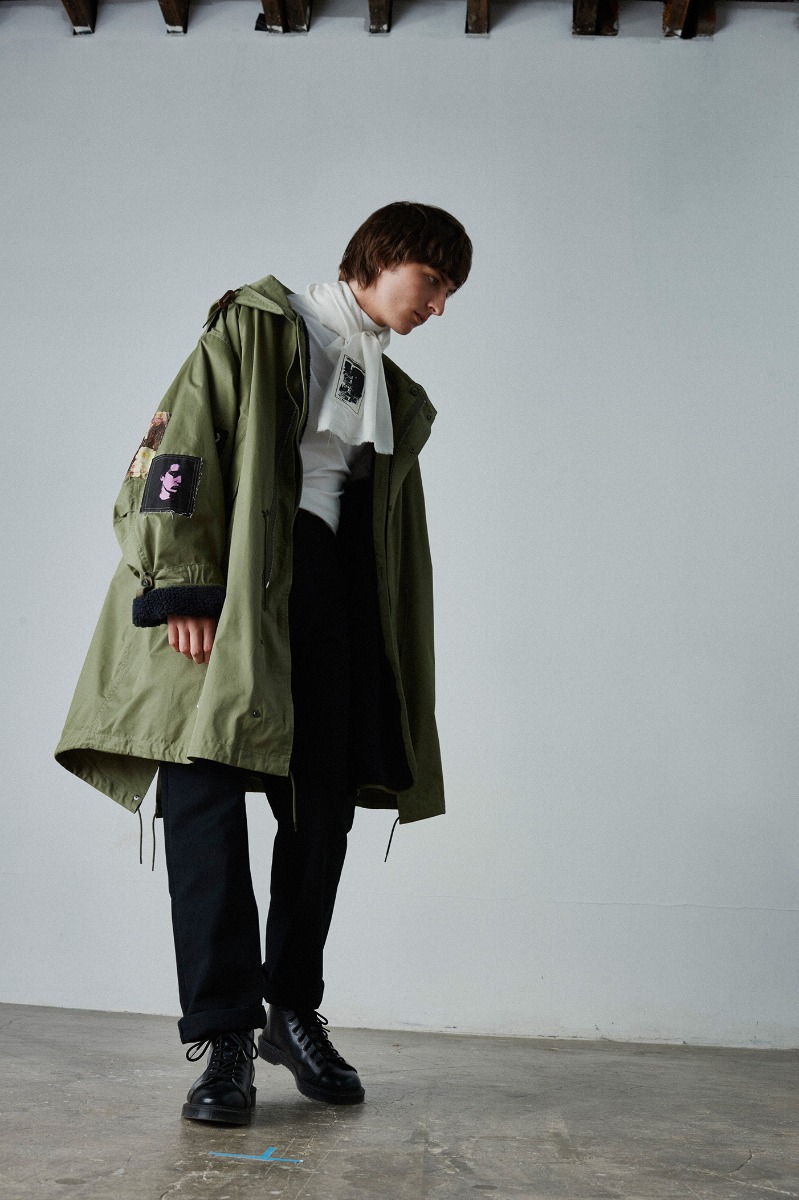Heavy with meaning, this accidental hero - army surplus adopted for its functionality, it kept your suit clean on a scooter and you warm waiting for the first train home - is loved as much for being a living document of its owners’ lives, as it is for a swagger entrenched in our national psyche.
Seen through the lens of Britain’s modern folk movement, the badged-up parka’s symbolism fits an ancient belief that clothing and ritual are intertwined. “It originates with the pilgrim badges of the Middle Ages,” explains visual artist Ben Edge, whose upcoming Frontline Folklore show explores contemporary British customs. “They returned from the Holy Land with relics in the form of badges; proof of their exploits that also expressed an allegiance to saints and cults.” What are scooter rallies and underground gigs if not pilgrimages, immortalised by Paddy Smith patches and pin badges.


